The Emotional World of Huskies
Huskies are one of the most popular breeds of dogs in the world. These beautiful, intelligent creatures are known for their stunning appearance, playful nature, and friendly personalities. However, like all living beings, huskies also experience a range of emotions that can significantly impact their behavior and overall well-being. Have you ever wondered
As husky owners, it’s essential to understand our pets’ emotional worlds so we can provide them with the best possible care. But how do we know if our husky is feeling sad or depressed?

Is My Husky Sad?
This question may seem simple enough, but it’s more complex than you might think. Like humans, huskies experience a wide range of emotions that can vary depending on their individual personalities and life experiences. It’s vital to remember that every dog is unique and will show emotions differently.
Some may become more vocal or clingy when they’re feeling down, while others may retreat from social situations entirely. But there are some common signs that your husky may be experiencing sadness or depression.
If your furry friend seems lethargic or uninterested in activities they typically enjoy, this could be a red flag. Other potential signs include loss of appetite or excessive sleeping.
The Importance of Recognizing Your Husky’s Emotions
Understanding your husky’s emotional state isn’t just essential for their well-being; it can also have a significant impact on your relationship with them. By recognizing and responding to your husky’s emotions appropriately, you’ll build trust and deepen your bond with them over time. This means paying attention to their body language and vocal cues and taking steps to address any issues as they arise.
In the next sections of this article, we’ll explore some potential causes of sadness in huskies and offer some tips for how to cheer up your furry friend if they’re feeling down. So let’s dive in and learn more about these fascinating creatures and their emotional worlds.
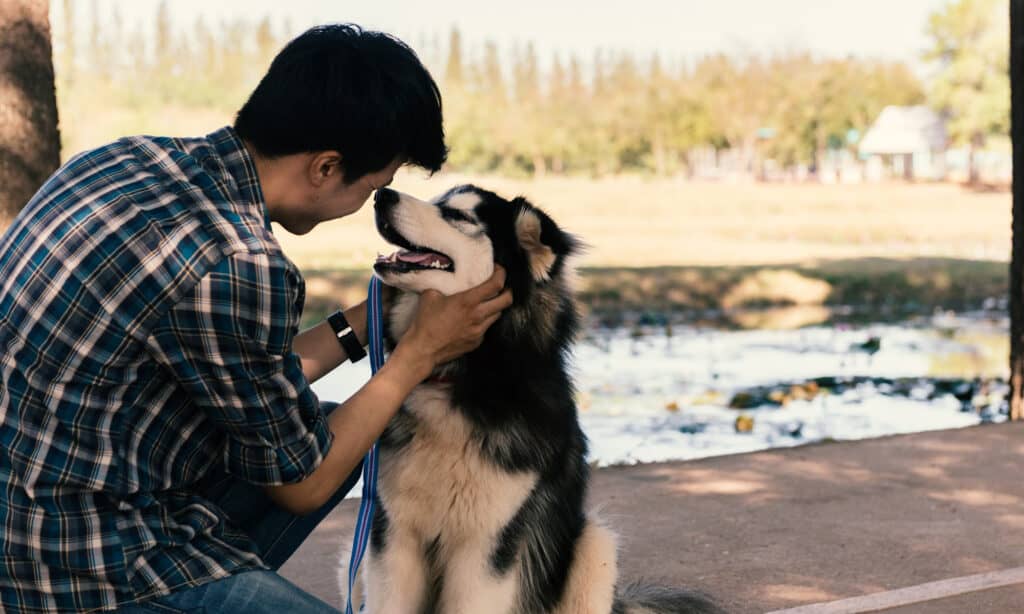
Signs of a Sad Husky
Huskies are known for being active, energetic dogs. They’re often playful and full of personality, but sometimes even the happiest husky can experience bouts of sadness. It’s important to recognize the signs that your husky may be feeling down so you can take action and help them feel better.
Lethargy
If your husky is feeling sad, they may appear lethargic or have a lack of energy. This can mean they don’t want to play as much as usual or seem less interested in going for walks or exploring their surroundings. You may notice that they’re not running around as much or sleeping more than usual.
It’s essential to keep an eye on their behavior to determine whether this lethargy is unusual for them. If you notice them behaving differently over a prolonged period, it could be a sign that they are unhappy and need your attention.
Loss of Appetite
Huskies are notorious for their love of food, so if you notice that your husky isn’t eating as much as usual, it could be a sign that something is wrong. Loss of appetite is often one of the first signs that something isn’t right with your pet’s health or emotional wellbeing.
You should monitor your husky’s eating habits closely and seek advice from your veterinarian if you’re worried about their weight loss. A lack of appetite could indicate anything from stress to illness, so it’s essential to rule out any underlying medical conditions before trying any remedies at home.
Excessive Sleeping
If your usually active husky becomes unusually lethargic and starts sleeping more than usual, it could indicate sadness or depression. While some dogs sleep more than others naturally, excessive sleeping coupled with other symptoms above should be taken seriously.
Dogs who sleep too much and have a lack of energy may be experiencing fatigue or depression. It’s important to keep an eye on their behavior, as changes in sleep patterns can be a sign that something is wrong.
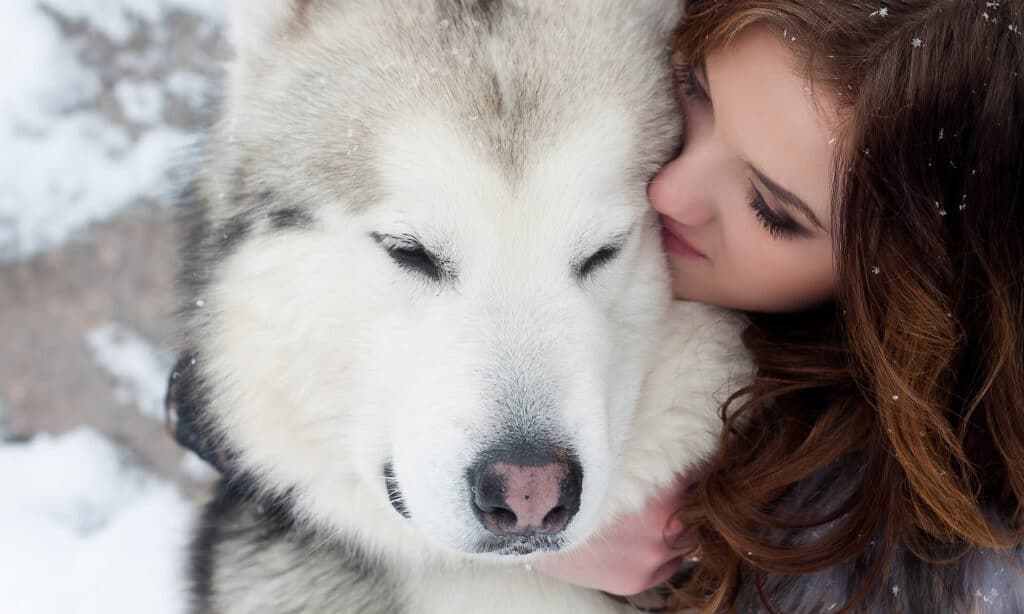
Withdrawn Behavior
Huskies are known for being social and lively animals, so if your husky becomes withdrawn or less interested in spending time with you or other pets, it could mean they’re feeling down. They may offer less affection than usual or look for places to hide rather than engaging with you.
If your husky has become more standoffish, it’s essential to observe their behavior closely and try to determine the root cause of their withdrawal. Sometimes extra love and attention can help them come out of their shell, but if the behavior persists for an extended period, it’s important to seek advice from a professional.
Anxiety
If your husky is anxious and shows signs such as pacing around the house, trying to escape through doors or windows when left alone, trembling excessively when you leave home etc., then it is clear they are not happy. Anxiety is one of the most common signs that your dog might be sad. Dogs who suffer from anxiety often get over-excited easily and cannot stay calm in different situations.
Dogs who experience anxiety due to loneliness can benefit from exercise and company. If observed early enough before it becomes chronic anxiety medication isn’t always needed because regular walks outside or longer playtime sessions will help combat any feelings of sadness.
Recognizing these signs early on can help prevent long-term problems with your furry friend’s mental health. Make sure you show them lots of love and attention while also considering professional help if necessary – remember; happiness is everything!
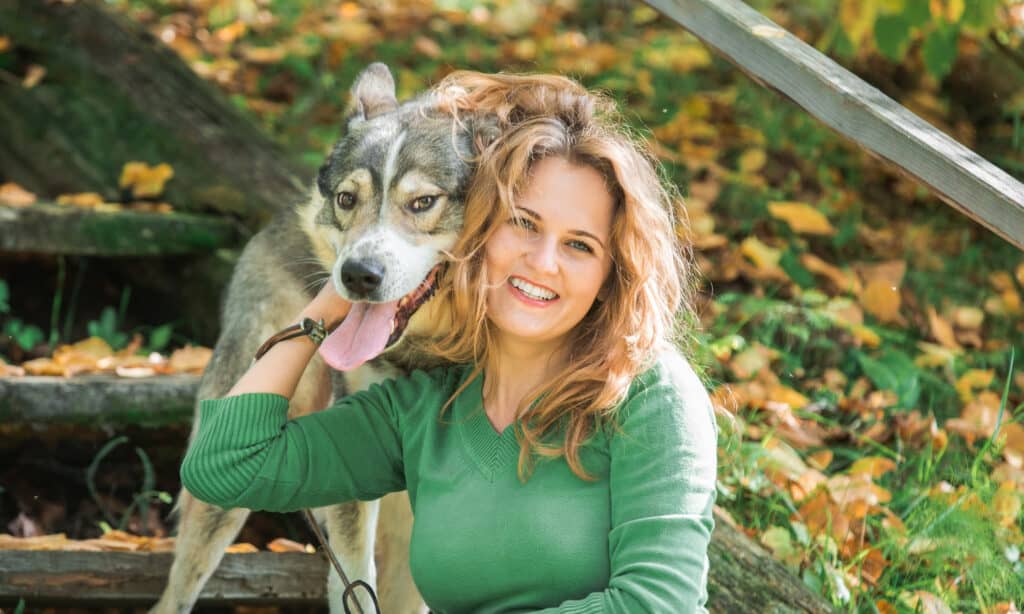
Possible Causes of Sadness in Huskies
Changes in Routine or Environment
One of the most common causes of sadness in huskies is a change in their routine or environment. Huskies thrive on routine and stability, so any major change can be stressful for them.
Moving to a new house, introducing a new pet, or even just changing their feeding schedule can all lead to feelings of anxiety and sadness for your furry friend. If you suspect that changes in your husky’s routine or environment are the cause of their sadness, it’s important to take steps to help them adjust.
Try to maintain as much consistency as possible, whether that means sticking to the same walk schedule or feeding them at the same time every day. You may also want to consider using pheromone sprays or diffusers designed specifically for anxious dogs.
Health Issues
Just like humans, dogs can experience physical health issues that affect their mental well-being. If your husky seems unusually sad or lethargic, it’s possible that they are dealing with an underlying health condition such as arthritis or dental problems. To rule out any potential health issues, make sure that your husky is up-to-date on all necessary vaccinations and regular check-ups with the vet. If you suspect something is wrong with your husky’s health but cannot identify the problem yourself, it is always best to seek veterinary care.
Lack of Socialization
Huskies are social animals and require regular interaction with both humans and other dogs. If your husky spends too much time alone without stimulation or socialization, they may become bored and sad. To prevent this from happening, try taking your husky on regular walks around the neighborhood where they can interact with other dogs and people.
Consider enrolling them in an obedience class where they can socialize and learn new skills. You may also want to invest in some interactive toys or puzzles to keep them stimulated when you’re not around.

Lack of Exercise
Huskies are known for their energy and require plenty of exercise to keep them healthy and happy. If your husky isn’t getting enough exercise, they may become restless, anxious, and sad. To prevent this from happening, make sure your husky gets plenty of physical activity every day.
This might mean taking them on long walks or runs, playing fetch in the backyard, or going for a swim at the local dog park. Whatever type of exercise you choose, make sure it’s something that your husky enjoys so that they look forward to it every day.
Loneliness
One of the most common causes of sadness in huskies is simply loneliness. Huskies are social animals and thrive on companionship, so if they don’t get enough attention from their owners or other dogs in the household, they can become sad and withdrawn. To combat loneliness in your husky, make sure you spend plenty of quality time with them each day.
This might mean cuddling on the couch or playing a game of tug-of-war in the backyard. You may also want to consider adding another dog to your household so that your husky has a constant companion when you’re not around.
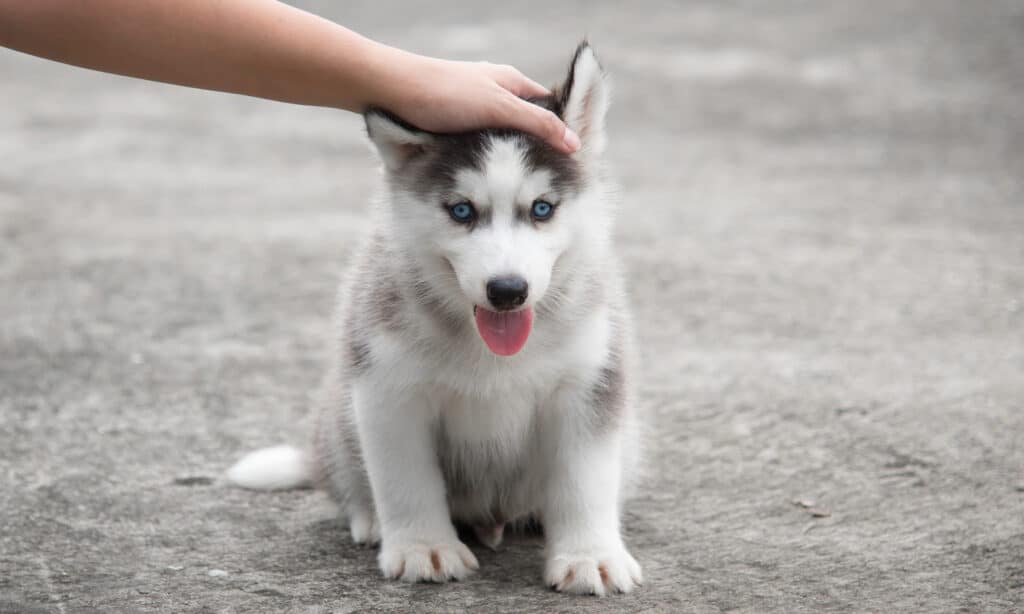
Ways to Cheer Up Your Husky
Outdoor Time: A Key to Happiness
Huskies are known for their love of outdoor activities. Taking your husky out for a walk or run can help to elevate their mood and overall disposition. Engaging in outdoor activities with your husky can help build a stronger bond, as well as provide necessary exercise.
Consider taking your furry friend to a nearby park or hiking trail to explore the great outdoors together. This will allow them to experience new sights and smells, which can be particularly stimulating for huskies.
Introducing New Toys and Games
Huskies are intelligent dogs that require mental stimulation as much as physical exercise. Providing new toys and games is one way to keep your husky mentally stimulated and entertained. Consider purchasing puzzle toys that hide treats or toys that encourage interactive play between you and your pet.
Another way to keep things exciting is by introducing new games such as hide-and-seek or tug-of-war. These games not only provide a fun outlet for both you and your dog but also strengthens the bond between pet and owner.
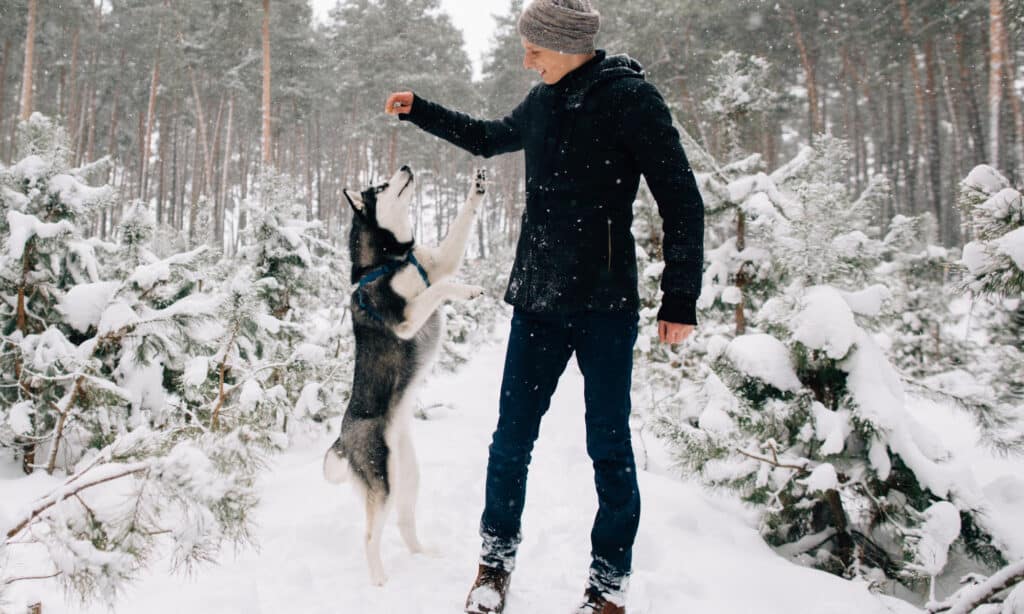
A Change of Scenery: Day Trips
Taking your husky on day trips outside of their familiar environment is another great way to lift their spirits when they’re feeling down. Consider taking them on a car ride, visiting the beach, or taking them on an adventure-filled hike up a mountain. A change of scenery can be just what they need to feel rejuvenated while experiencing new sights, sounds, smells, tastes and textures in their surroundings.
Foody Fun Time: Homemade Treats
Just like humans, dogs enjoy indulging in tasty treats from time-to-time too! Making homemade treats for your pet is not only cost-effective but also allows you the opportunity to tailor recipes specifically to their preferences and dietary needs.
Making treats together with your husky is also a great way to spend quality bonding time. You can find homemade treat recipes online, but always ensure that the ingredients are pet-safe before feeding them to your dog.
Stay Positive: Positive Reinforcement
Your husky’s mental well-being is just as important as their physical health. One way to promote positivity is through positive reinforcement training.
This involves rewarding good behavior with treats or praise while ignoring or redirecting negative behavior. Encouraging positive behavior will help reinforce and encourage the desired behavior, creating a happy and confident husky that you’ll love being around.
Keeping your husky happy and healthy requires effort and attention. Following these tips will not only brighten up their day but also strengthen the bond between you both, leading to a happier life together.

Understanding Your Husky’s Emotions
The Emotional Lives of Huskies
As a husky owner, it’s important to realize that your furry friend has emotions just like you do. While they may not be able to communicate their feelings in the same way humans can, huskies are highly intelligent animals and are capable of a wide range of emotions.
In fact, research has shown that dogs have similar brain structures and produce many of the same hormones that humans do when they experience emotions. This means that just like people, huskies can feel happy, sad, anxious, and more.
The Benefits of Recognizing Your Husky’s Emotions
By recognizing and empathizing with your husky’s emotions, you’ll be able to provide them with better care and help them lead happier lives. For example, if you notice your husky seems scared during thunderstorms or fireworks displays, you can take steps to help calm their anxiety by providing a safe space for them to retreat to or using calming pheromone sprays.
Similarly, if you recognize signs that your husky is feeling sad or depressed (such as lethargy or loss of appetite), you can take steps to help cheer them up – such as spending more time playing with them outside or introducing new toys and activities. Overall, taking the time to understand your husky’s emotional state will help strengthen your bond with them and make both their lives – and yours – much happier.
How To Recognize Your Husky’s Emotions
While it may seem difficult at first glance, recognizing your husky’s emotions is actually fairly straightforward once you know what signs to look for. Some common indicators include:
- Tail position: A wagging tail usually indicates happiness or excitement while a tucked tail may indicate fear or anxiety
- Body posture: A relaxed body posture usually indicates a calm, contented husky while stiff, tense muscles may indicate fear or aggression
- Vocalizations: While huskies aren’t known for barking excessively like some breeds, they still communicate through their vocalizations. Whining or whimpering can be signs of anxiety or fear while growling may indicate aggression
- Eye contact: Maintaining eye contact with your husky can help you better understand how they’re feeling. Dilated pupils can indicate fear or excitement while avoiding eye contact may mean they’re feeling anxious.
By paying attention to these subtle cues and taking note of changes in your husky’s behavior, you’ll be better equipped to recognize and understand their emotional state.
In the end, recognizing and understanding your husky’s emotions is an important part of being a responsible pet owner. By empathizing with your furry friend and taking steps to address any negative emotions they may be experiencing, you’ll help ensure that they stay happy, healthy, and well-cared-for for years to come.
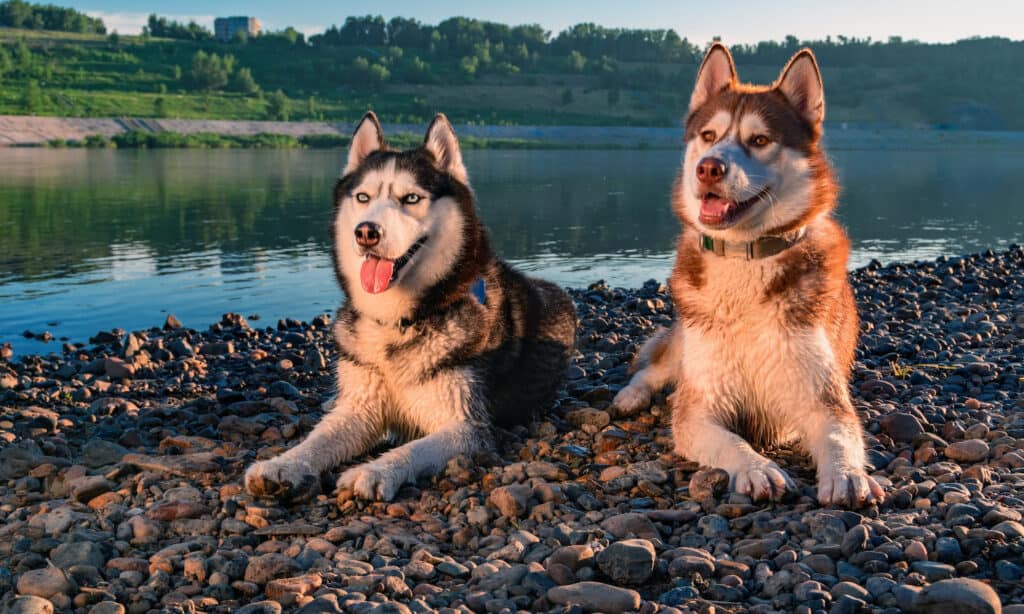
Conclusion
After reading this article, you should now have a better understanding of your husky’s emotions and behavior. It is important to recognize that just like humans, dogs can experience a wide range of emotions, including sadness. If you notice any signs of sadness in your husky, such as lethargy or loss of appetite, it is important to take action.
Your husky may be experiencing a variety of stressors in their environment or may simply need more attention and activity. One way to prevent sadness in your husky is by providing plenty of exercise and an enriching environment that includes new toys and games for them to enjoy.
You can also consider taking them on daily walks or runs to help reduce stress levels. As pet owners, we have a responsibility to pay close attention to our huskies’ behavior and seek professional help if necessary.
There are many qualified animal behaviorists who can offer valuable insight into why your pet may be feeling sad or depressed. It is also important to remember that every dog is unique and what works for one may not work for another.
Experiment with different activities and methods until you find what works best for your furry friend. If you suspect that your husky may be feeling sad, take immediate action.
The earlier you identify the cause of their unhappiness, the sooner they can start feeling better. With proper care and attention, you can help ensure that your beloved furry companion lives a happy and fulfilled life by your side!
~Lindsie
